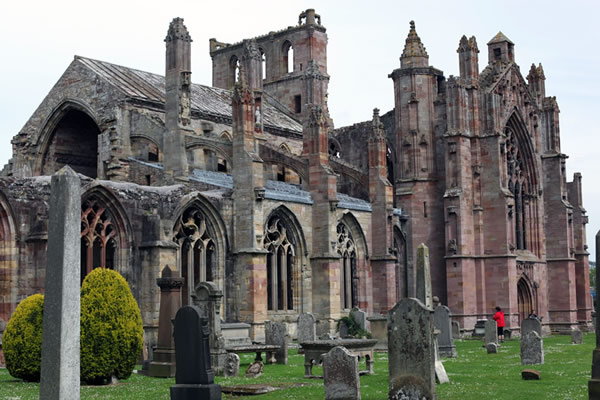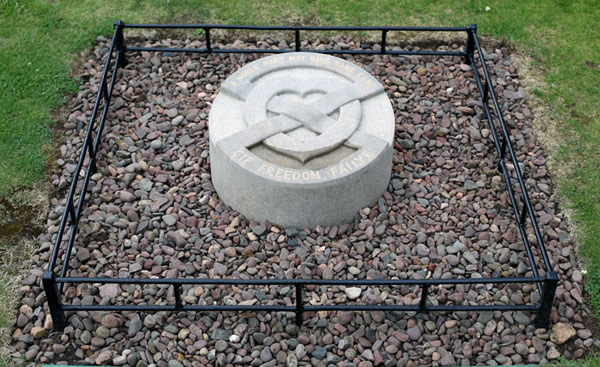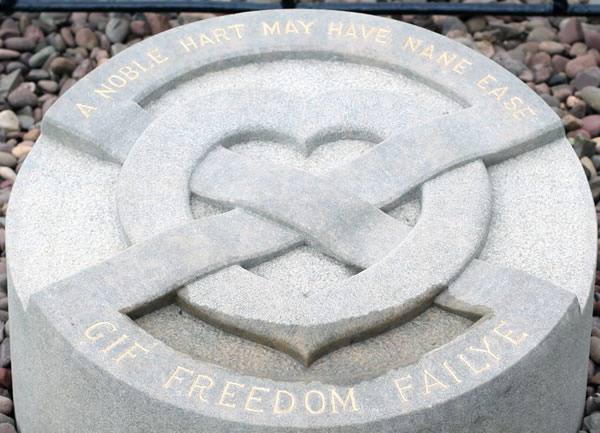The ruins of the Melrose Abbey in the Scottish Borders are as eerie as they are beautiful. Built in the 12th-century, it was used as a monastery and later a church well into the 1800s.

While Scotland has plenty of church ruins, these are notable as they purportedly house the heart of Robert the Bruce. Today, there is a modern marker for the spot where it is buried.

The story of how Bruce’s heart could have even ended up here is medieval lore. According to John Barbour, a Scottish chronicler writing in the 14th-century, the Scottish King was on his deathbed when he asked that one of his knights take his heart on crusade, literally to fight against God’s enemies. The knights selected Sir James Douglas among themselves for the role. ((John Barbour, The Bruce, 20.185-250.)) Jean le Bel, a French chronicler from the same period, described Bruce’s wish for his heart to travel to the Holy Sepulcher in Jerusalem before returning to Scotland for burial. ((Jean le Bel 15-16.)) Regardless, both chroniclers identified Douglas as the man for the job.
According to Barbour, upon the king’s death, Douglas put the heart in a silver case and wore it around his neck. He went to Spain because he knew there was a war against the Moors there. His reputation preceded him and the King of Spain gave Douglas command of part of his army. In the heat of battle against the Moors, Douglas was slain. His men carried his bones—literally disemboweled and boiled him—along with Bruce’s heart. The Scots buried the heart at the Melrose Abbey. ((John Barbour, The Bruce, 20.250-610.))
Aside from these two chroniclers telling an amazing story, there is credibility to at least Bruce wanting his heart separated from his body and sent on crusade. Pope Boniface VIII had issued a bull in 1299, threatening excommunication for dismembering bodies for funerals. That is, of course, unless one gained special dispensation from the papacy. Remarkably, it is because of this that we know the story of Bruce’s heart being separated from his body is likely true. There is a surviving record gaining such dispensation for burying Bruce’s heart separate from his body. ((The full text in Latin available in Augustino Theiner, ed., Vetera Monumenta Hibernorum et Scotorum (Rome: Typis Vaticanis, 1864), 251, no. 498.))
Finding, Losing, and Re-finding the Heart
The location of Bruce’s heart remained unknown for centuries until some archeologists discovered it in the 1920s. However, they reburied it and never marked its location.
Finally, in 1996, another group of archeologists rediscovered the mummified heart. Although we are not certain it is Bruce’s heart, the canister is of the right age to match the story. Historic Scotland refused tests on the actual heart, wanting to the keep the romance alive through uncertainty. The symbolism was what was important.

After examining the heart and giving it a new canister, there was a ceremony to rebury in the same spot with the stone marker we can see today. ((David R. Ross, On the Trail of Robert the Bruce (Glasgow: Bell & Bain, 1999), 149.))

The new canister contains the same heart design as the stone marker.
Modern historians have theorized Bruce’s heart was buried separate from his body like this in order to awe his subjects and enemies. ((Michael A. Penman, “King Robert the Bruce (1274-1329),” Éstudes écossaises 10 (2005): 10.)) Nearly 700 years later, it still has our attention.
